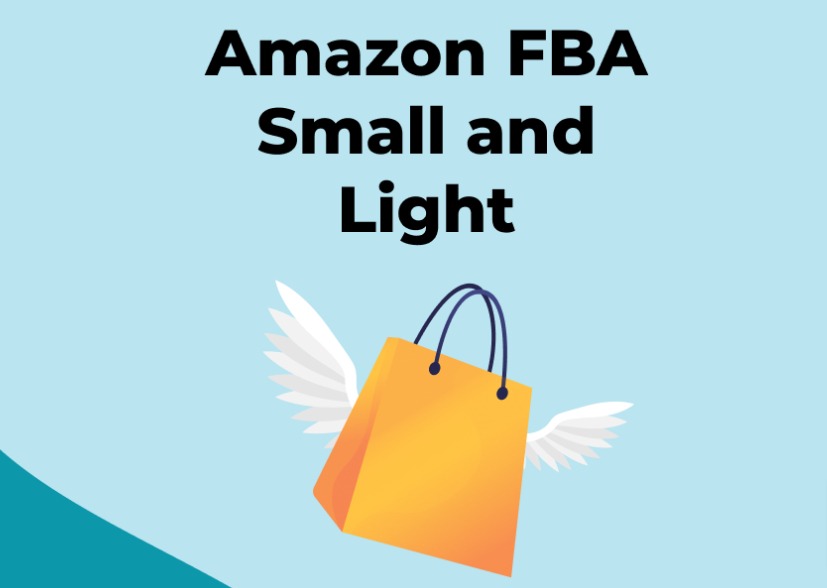If you are an online seller who wants to leverage the power and convenience of Amazon’s fulfillment network, you might be wondering which program is best for you: FBA Small and Light or Amazon FBA (Fulfillment by Amazon). Both programs offer the benefits of storing your inventory in Amazon’s warehouses, packing and shipping your orders to customers, and handling customer service and returns. However, they also have some key differences that can affect your profitability and customer satisfaction.
In this article, we will compare Amazon FBA Small and Light with Standard FBA in terms of eligibility criteria, fees, delivery speed, and customer ratings. We will also provide some tips on how to choose the right program for your products and business goals.
What is FBA Small and Light
FBA Small and Light is a program designed for sellers who offer low-priced products that are small and lightweight. The program offers lower fulfillment fees and free shipping for Prime members. Thus, it permits sellers to present small and lightweight products at an inexpensive price for customers. To qualify for FBA Small and Light, your products must fulfill the following criteria:
– The price must be $7 or less for non-media items and $10 or less for media items.
– The weight must be 10 oz or less.
– The dimensions must be 16 x 9 x 4 inches or less.
– The products must be new and not require special handling or preparation.
What is Standard FBA?
Standard FBA is the default program for sellers who use Amazon’s fulfillment services. It allows you to store your products in Amazon’s fulfillment centers and have them picked, packed, shipped, and handled by Amazon. You can also benefit from Prime eligibility, fast delivery, customer service, and returns management. To use Amazon FBA (Fulfillment by Amazon), your products must meet the following criteria:
– The weight must be 50 lbs or less.
– The dimensions must be 25 x 18 x 12 inches or less.
– The products must not be hazardous, restricted, or prohibited.
How to Choose Between FBA Small and Light and Standard FBA?
The main factors to consider when choosing between FBA Small and Light and Standard FBA are the following:
– The price of your products: If your products are low-priced, you might save money on fulfillment fees by using FBA Small and Light. However, if your products are higher-priced, you might benefit from the higher conversion rates and customer loyalty that come with Standard FBA.
– The size and weight of your products: If your products are small and lightweight, you might qualify for both programs. In that case, you should compare the fulfillment fees and shipping speeds of each option. Generally, FBA Small and Light offers lower fees but slower delivery times than Standard FBA.
– The demand for your products: If your products are in high demand, you might want to use Standard FBA to ensure fast delivery and customer satisfaction. However, if your products are seasonal or niche, you might prefer FBA Small and Light to avoid long-term storage fees and inventory management issues.
To sum up, FBA Small and Light and Standard FBA are two different programs that cater to different types of sellers and products. You should evaluate your business goals and product characteristics to determine which option is best for you. You can also use Amazon’s FBA Revenue Calculator to estimate your potential profits and fees for each program.
Conclusion
FBA Small and Light and Standard FBA are two different fulfillment options offered by Amazon for sellers who want to leverage its network of warehouses and delivery services. FBA Small and Light is designed for products that are small, light, low-priced, and fast-moving, while Standard FBA is more suitable for products that are larger, heavier, higher-priced, or slower-moving.
The main differences between the two options are the eligibility criteria, the fees, the shipping speeds, and the customer benefits. Depending on the product characteristics and the seller’s goals, one option may be more advantageous than the other. Therefore, sellers should carefully evaluate their products and compare the costs and benefits of each option before choosing the best fulfillment solution for their business.
- Qualcomm Snapdragon 6s Gen 3 Mobile Platform Unveiled: What To Expect? - June 7, 2024
- How to Combine PDF Pages: Easy Guide - June 7, 2024
- HTC U24 Series Teased to Launch on June 12: Here’s All You Need To Know - June 7, 2024

